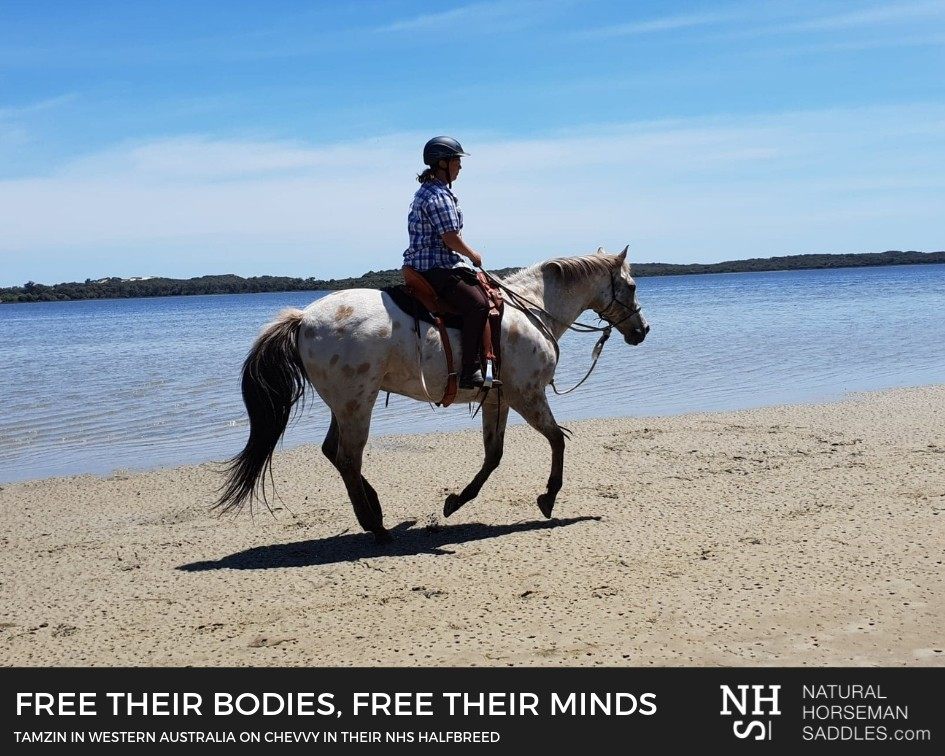
There’s no mistaking saddles influence a horse’s way of traveling, their health and their happiness. They are more impactful than most people realise and no one wants to cause pain or physical and emotional damage to a horse we love!
With so many ‘saddle fitting experts’ out there, it’s hard to know who to trust. Common sense, education, and evaluation become the cornerstones for getting this Saddle Fitting ‘thing’ right…
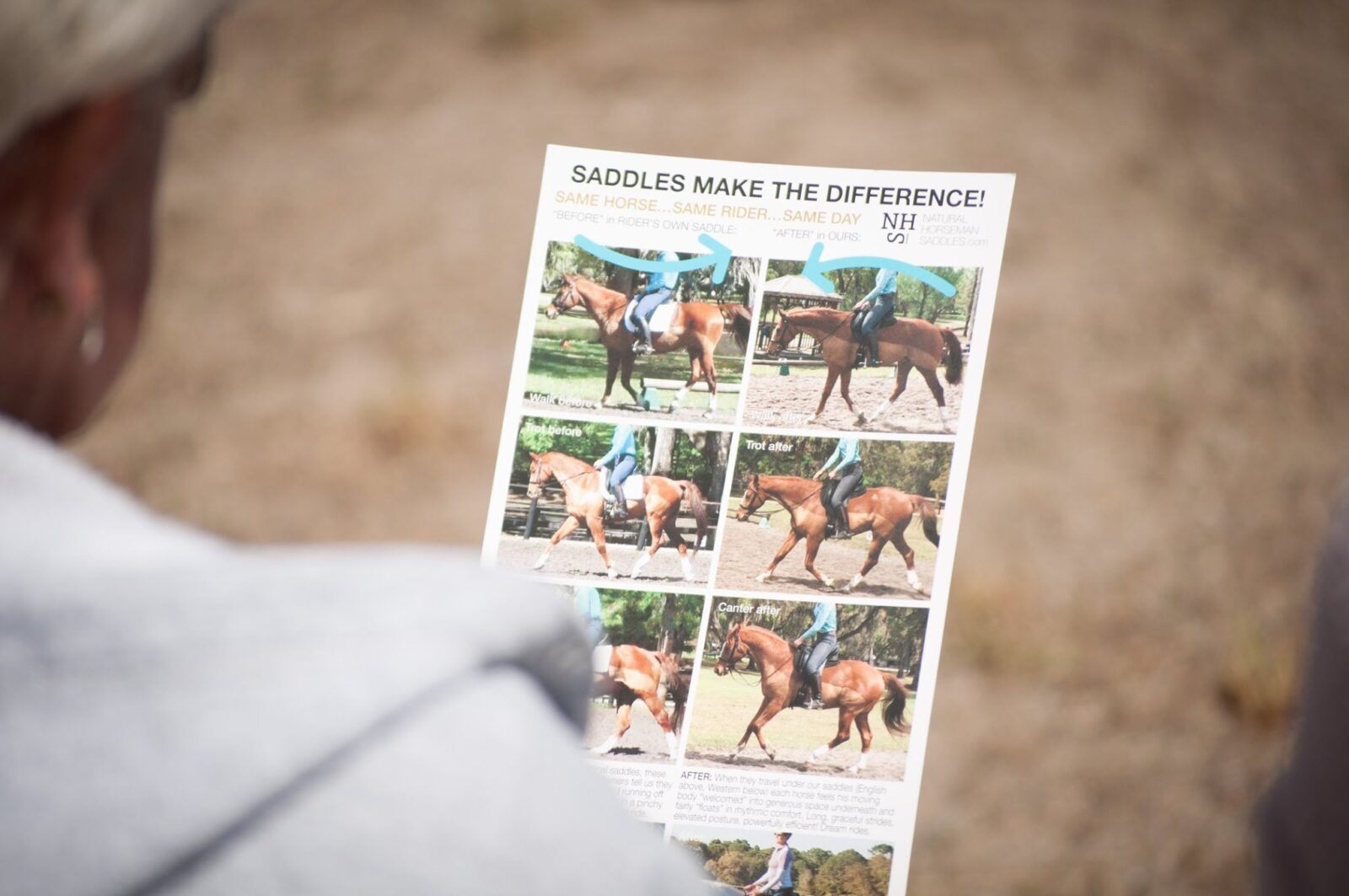
TRADITION WON’T TELL YOU:
Saddles, yes even custom made ones, have traditionally been fitted to ‘stationary’ horses. That’s great if you’re planning to saddle a wooden rocking horse. But from the moment they take that first step, he/she becomes a new set of shapes. The entire trunk is broader, the top line flatter, and it is ever-changing with every stride. The saddle is now too small [left to right] and curved too ‘downward’ [front to back]. This curve is often referred to as the ROCK of the saddle tree.
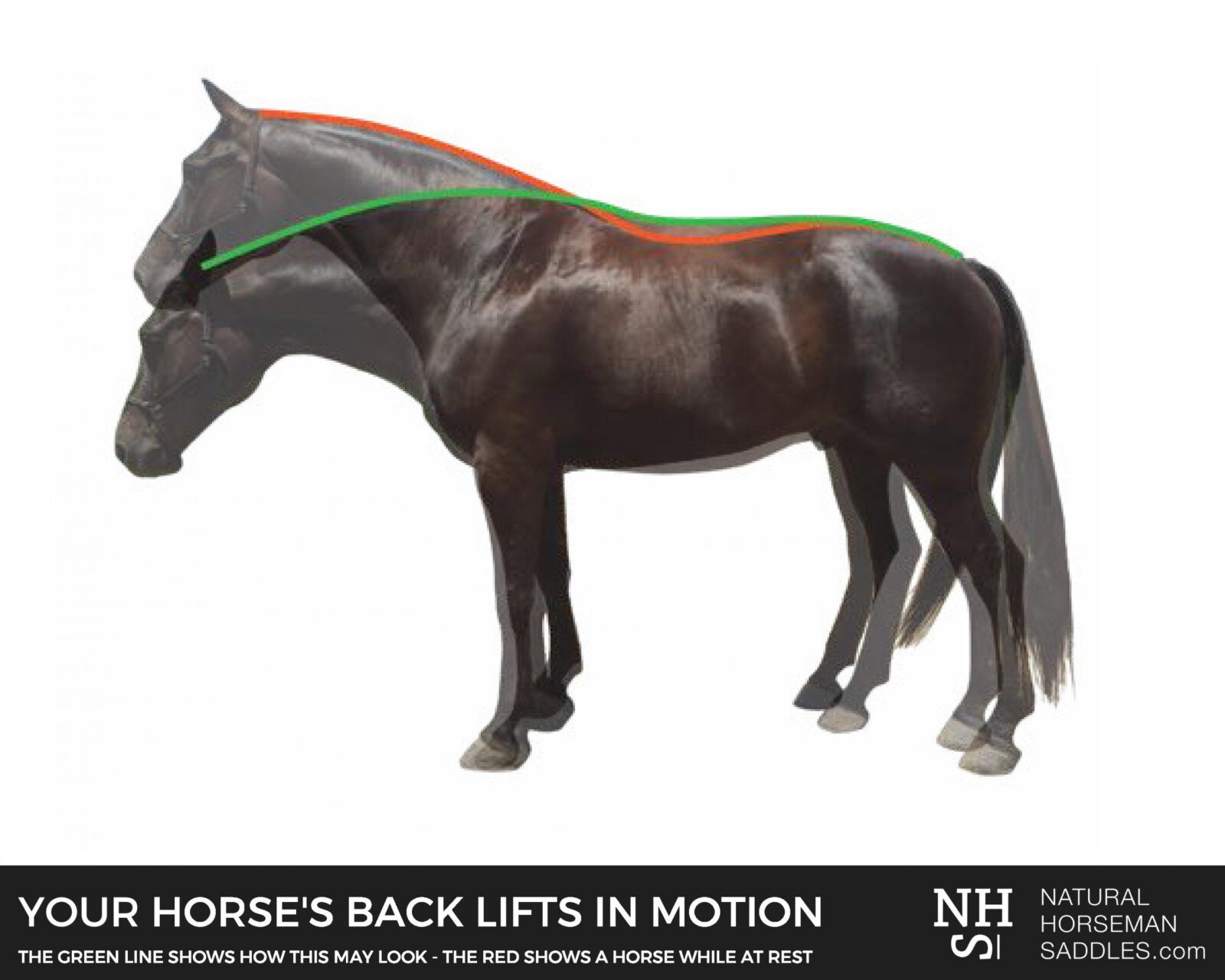
YOUR HORSE WILL TELL YOU:
Your horse will give you the most reliable information you need to assess their saddle fit.
It will be clear at all gaits… even the walk.
A horse adjusting itself to a too convex or too narrow saddle will show you signs of discomfort. You first have to notice, and then take steps to rectify the issues.
CHALLENGES WITH BAD SADDLE FIT…
When a horse is wearing an ill-fitting saddle, they experience pushing/pinching/prodding. The rider’s weight, bearing down on uneven areas of the horse, causes pressure and disharmony. This ‘traps’ the shoulders and back. The result? Discomfort and pain for your horse. Even anxiety!
Since these creatures seek comfort, this will affect many areas of our training. How can you ‘release pressure’ after the execution of an aid if the saddle is creating it? How can a horse’s mental state be calm and ‘trainable’ in a state of hyper-alertness and self-protection? How can a horse be supple when bracing against discomfort? A prey animal who is not comfortable does not believe he/she is safe. “Spookiness” can result. So now the rider isn’t safe either!

Compare running a marathon in a pair of JIMMY CHOO stilettos instead of your comfy pair of Nikes. Can you imagine? Wouldn’t you be in ‘quite the mood’ during that run! If you could do it at all… And the pain you’d endure. Ouch.
Making sense? Get this saddle-fitting caper wrong, and you could start behind the eight ball every time you ride.
Ok… Let us dive into some mechanics before we head to the how-to.
WHAT IS HAPPENING UNDERNEATH A SADDLE WHEN THE HORSE IS MOVING?
As discussed already, we need to think about how a horse changes when moving as opposed to a standstill. Only then can we see why traditional saddle fitting may not be working for most horses. The process of movement goes something like this…
First, the shoulders will move backwards and forwards. They bulge and become wider under the front of the saddle with leg function. Each scapula (shoulder blade) must be free alternatively to do this without restriction. Next, the abdomen contracts and lifts. This causes the back to broaden and elevate up under the saddle. The back rocks and rolls with every step. The ribcage expands and flexes. With that, the spine has a constant snaking action. All this happens in sync with the hind legs. They swing underneath the trunk and help propel the whole package across the ground. If one aspect of that motion can’t function, as it should, the horse ‘compensates’ for this.
Some people report not even being able to notice their horse is uncomfortable. Important fact: A horse’s DNA tells it to forge ahead and not appear weak or wounded. That horse is usually the loser in Mother Nature’s ‘Hunger Games’. So yes, they can try and hide their weaknesses. It means we have to look harder.
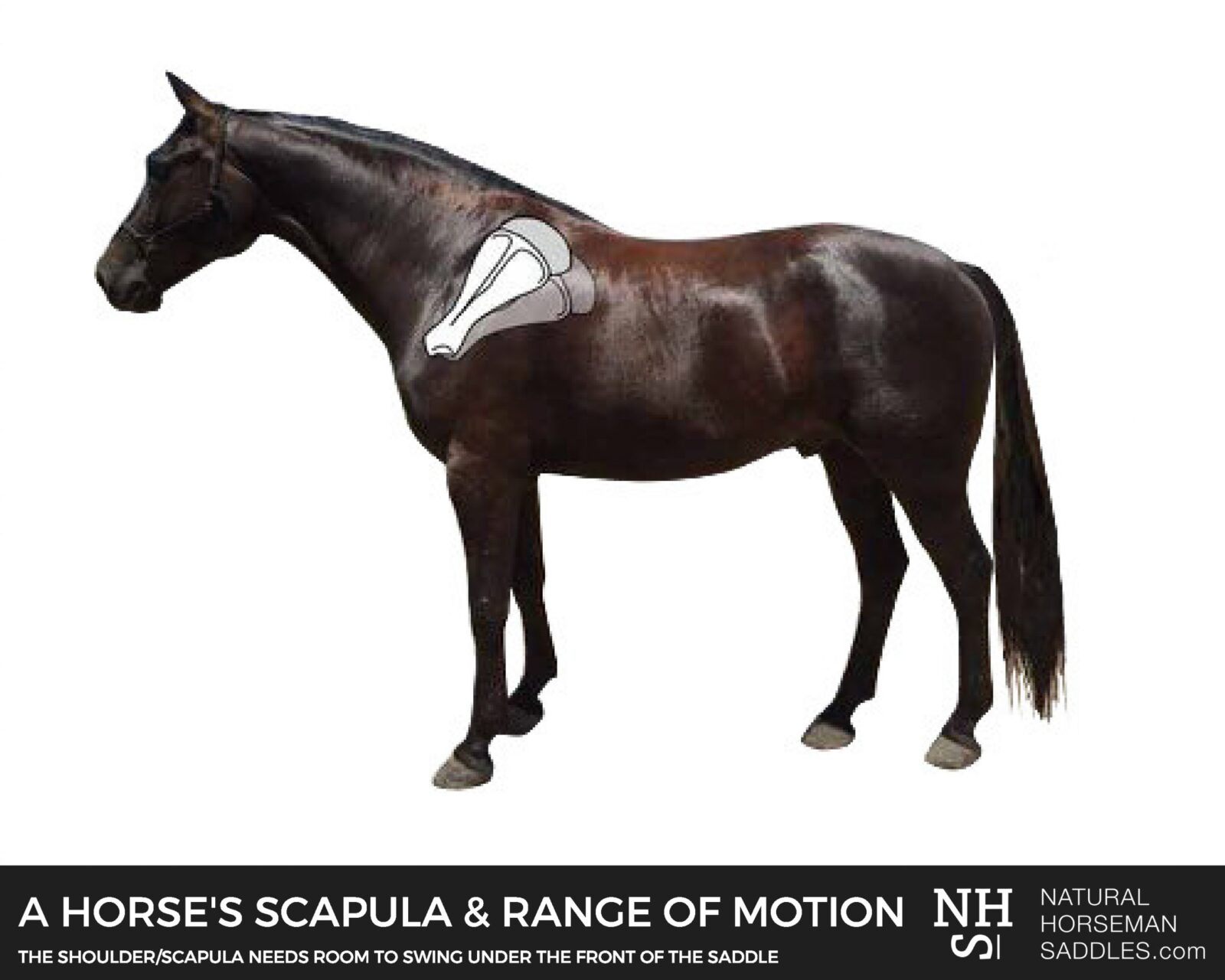
So what is the result of this change in movement?
They begin to use their body in a way that creates postural changes. Those changes can even present as poor conformation.
Note: “Conformation” is what your horse is born with and cannot change. “Posture” is something we can influence.
By the time your horse is showing problems, body workers now need to become your new best friend.
Often, we see horses unable to build topline and become imbalanced to the eye. Lameness among a host of other symptoms begins to show. This is the result when biomechanics aren’t efficient. Sounds serious, right? It is… What is just as serious is how their attitude to being ridden can also change.
WHAT HAPPENS WHEN A HORSE MOVES UNDER AN ILL-FITTING SADDLE…
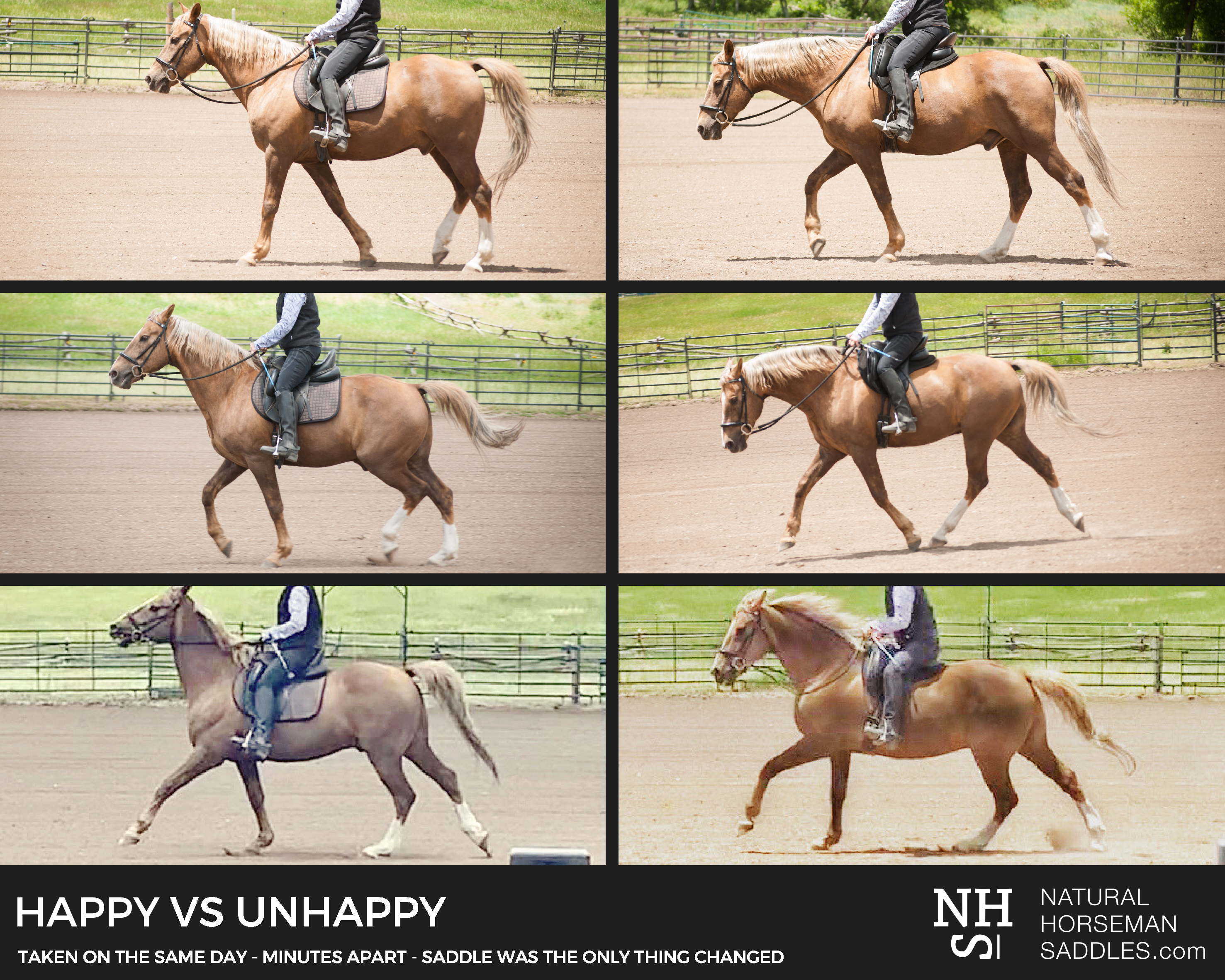
Horses suffer in several ways when forced to carry a rider in a restrictive saddle. Even more likely when a rider isn’t balanced and skilled enough to be non-influential. Oh look… Now the horses attitude comes under fire. The thing is, people rarely think to explore saddle fit as the cause.
They assume horses ‘misbehaviour’ is due to other things.
They forget their equipment could be getting in the way!
We are not saying saddles cause ALL riding issues – that isn’t true. Environment, training styles, age, injury, rider OR horse experience indeed come into play. BUT… in a process of elimination or to highlight a root cause of a problem, you need to know if your saddle is playing a part. By heightening your awareness of what to look for, you can work out how your horse perceives the fit of your saddle.
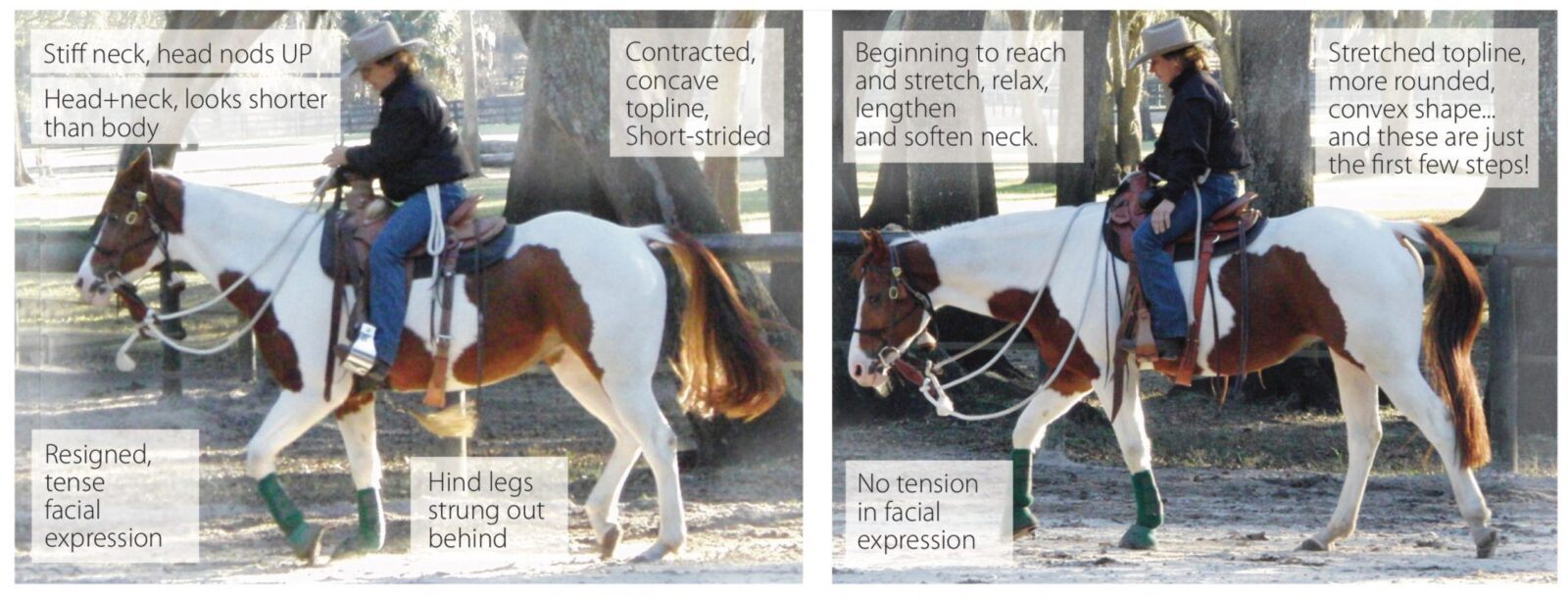
Ill-fitting saddles cause short and choppy strides, hollowed backs, stiff necks and elevated heads. But there are other signs. If you notice some or all of these following behaviours from your horse, you could have a problem. The good news? It’s ‘fixable.
AT THE WALK…
Short and tense stride
Bearing the weight on the forehand
Ears–If they’re pinned, they’re not checking in with you!
Head nodding UP instead of down
Stiff, straight neck
Length of head/neck shorter than the length of the body
Hindfoot can’t reach where front foot left off
Halts on the front end or stab up puffs of dirt in front
Dropped back and abdomen
Reluctant to move or rush
AT THE TROT…
Doesn’t like this gait
Stops, breaks gait or gets faster
Short and choppy stride
Seems rough to the rider.
Head comes up.
Doesn’t ‘step through’ with the hind feet
Stumbles
Is Tense
Neck appears tense and skinny
The under neck muscles bulge while the top of neck muscles look flat
Length of the head/neck looks shorter than their body
Facial expression strained
AT THE CANTER…
Difficult to transition into the canter/lope
Head shoots up in transition
Bucks into the canter/lope
Head high, neck short, hollows back, drops abdomen
Can’t “collect” and roundup
Stumbles
Won’t maintain gait
Lead changes difficult
Becomes impulsive
Hind legs can’t reach deep underneath
Footfall in front sounds and looks heavy
If you see some or all of these, it likely means your horse is experiencing discomfort. Pay attention.
Does your horse move during the saddling process?
Stepping away as you approach with the saddle?
Do they show signs of anxiety?
Watch their face and ear expressions for clues.
Are they dropping their backs and lifting their heads?
Biting at the girth while tightening?
Unable to stand still?
All things to note.
7 QUICK WAYS TO ASSESS SADDLE FIT.
Look at your saddle. Is it?
* Perched up on your horse like a birdhouse on a beach ball… or does it hug his/her body?
* Is it angled down towards the front? This would mean that the rider’s pubic bone would angle downward when they are seated in the saddle. Unable to position it under, upward, and forward, which is preferred. It would ‘dump’ their weight on their horse’s forehand and create a less secure seat, along with less comfort for their horse.
* Angled too high and creating pressure into your horse’s loins when bearing weight? Your horse’s head will be held too high while carrying you. His/her rear legs will be strung out too far behind and lumbar pain will result.
* Is the wither clearance generous enough? Check this again once you have mounted. You should be able to put two fingers under the gullet even while bearing weight. You don’t want pressure against your horse’s withers – Ever!
* Do you find excess sweat at the front and rear of your saddle only, with dry spots in the centre?
* Do you have sweat through the centre and rear but ‘dry’ spots near the shoulders?
* When cinched/girthed, are you able to reach back to the stirrup bar/rigging area with your hand under your saddle and pad? (Reach along up high near the bars of the saddle). If you can’t get your hand under there without it feeling pinched, your horse’s shoulders cannot function optimally. This will jeopardise their entire biomechanics. Your hand should slide in with ease.
If you can’t do this, perhaps explore a different pad or shim/insert set up (your interface) or get a professional in to help (in person or via a tool like our ‘Free Digital Saddle Fit Evaluation’). A professional ‘guiding hand’ can be a godsend…
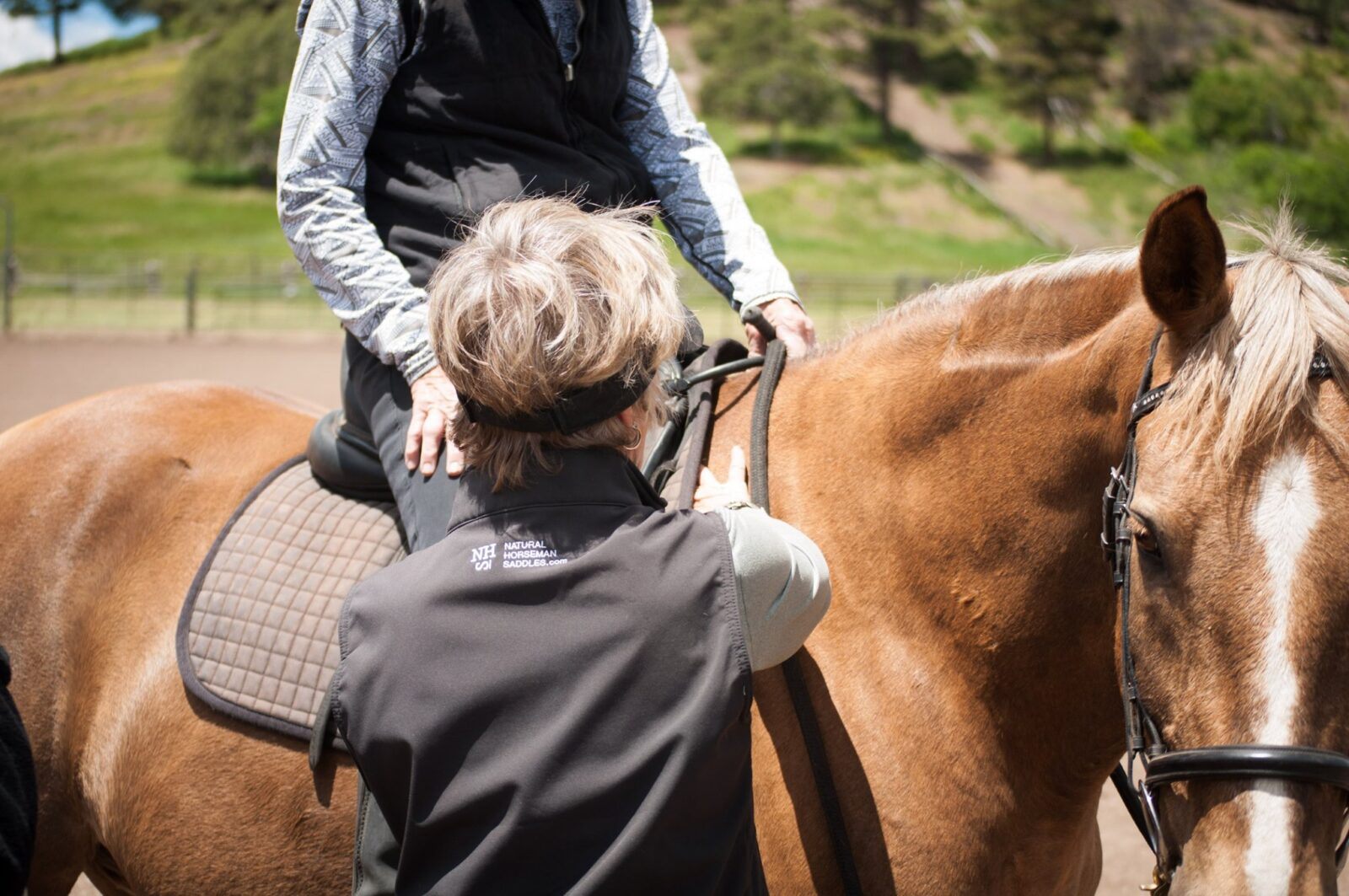
THE LOW DOWN ON SWEAT PATTERNS
Horses sweat first from their front, then down their sides toward the back, in that order. Remember, with sweat patterns, you are looking for even distribution, except along the spinal channel.
The amount of work your horse has endured in that session can yield confusing results so be mindful of that when using them as a gauge. Example: NO sweat CAN mean excess pressure or no contact with the saddle/pad system. (The channel should have no pressure from the saddle’s gullet, but sweat could still seep from the left and right sides of the pad). OR, it could mean you didn’t work your horse long enough to yield sweat everywhere under the saddle.
Don’t crack a sweat over sweat. Observe, compare, and stay educated. They may not tell the full story. It could be more important to read your horse. A better tool might be to have a friend video you riding so you can see your horse’s posture while carrying you?
It’s a wonderful way to start working out the truth or create comparisons.
Here is a great exercise to gauge the differences between your saddle and your horse and tell the true story.
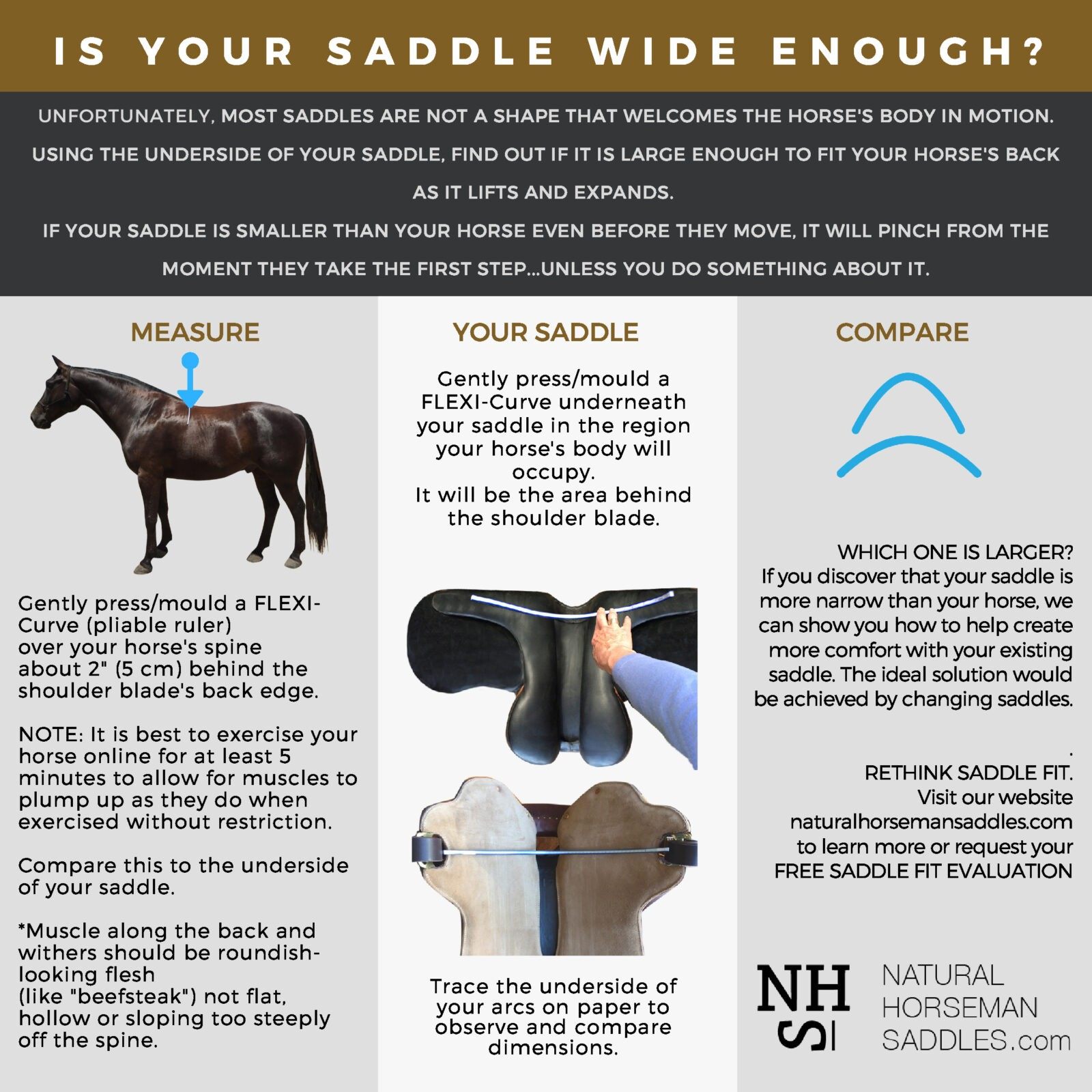
When choosing a saddle for your horse, do your research.
As horse people, we often enrol in the school of ‘tradition’ in how we set about doing things. Influenced by family, friends, trainers and industry leaders. Exploring new perspectives and better solutions takes courage and effort. It’s the harder road to ride, but the alternative could be even harder.
Choose your saddle as you would your children’s educators or your healthcare professionals. Be sure they (and you) have done the research to yield results that back up claims and promises. Demand they offer plenty of support through your riding journey for their products and methodologies. Be sure your horse agrees with your choice!
